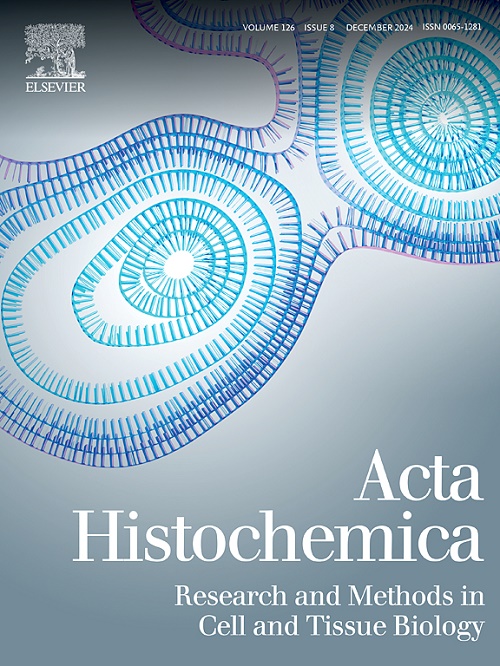Galactia lindenii lectin type-II: Its potential use in thyroid cancer diagnosis
IF 2.4
4区 生物学
Q4 CELL BIOLOGY
引用次数: 0
Abstract
Galactia lindenii lectin type-II (GLL-II) belongs to the group of the legume lectins. The present study investigated the GLL-II staining patterns in histological sections of neoplastic and non-neoplastic thyroid tissues. Besides, hemagglutination assays (HA) using the GLL-II on red blood cells of different glycomic profiles were performed, complementing previous results. The differential staining in Papillary Thyroid Cancer, Invasive Encapsulated Follicular Variant Papillary Thyroid Carcinoma, Hashimoto's thyroiditis, and non-neoplastic thyroid with goiter changes, together with the HA results, allowed us to propose the potential utility of GLL-II as part of lectin platforms used to discriminate between human thyroid pathological samples from normal ones. The present study shed light on potential applications of GLL-II in determining alterations of glycosylation patterns in specific cells, tissues, or body fluids, as well as glycotopes biomarkers of healthy or pathological conditions.
银杏凝集素ii型:在甲状腺癌诊断中的潜在应用
银河莲凝集素ii型(GLL-II)属于豆科植物凝集素的一类。本研究研究了甲状腺肿瘤组织和非肿瘤组织组织学切片的GLL-II染色模式。此外,使用GLL-II对不同糖谱的红细胞进行了血凝试验(HA),补充了先前的结果。甲状腺乳头状癌、浸润性囊泡变异型甲状腺乳头状癌、桥本甲状腺炎和非肿瘤性甲状腺伴甲状腺肿大变化的鉴别染色,以及HA结果,使我们提出GLL-II作为凝集素平台的一部分,用于区分人类甲状腺病理样本和正常样本的潜在用途。本研究揭示了GLL-II在确定特定细胞、组织或体液中糖基化模式改变以及健康或病理状态的糖基生物标志物方面的潜在应用。
本文章由计算机程序翻译,如有差异,请以英文原文为准。
求助全文
约1分钟内获得全文
求助全文
来源期刊

Acta histochemica
生物-细胞生物学
CiteScore
4.60
自引率
4.00%
发文量
107
审稿时长
23 days
期刊介绍:
Acta histochemica, a journal of structural biochemistry of cells and tissues, publishes original research articles, short communications, reviews, letters to the editor, meeting reports and abstracts of meetings. The aim of the journal is to provide a forum for the cytochemical and histochemical research community in the life sciences, including cell biology, biotechnology, neurobiology, immunobiology, pathology, pharmacology, botany, zoology and environmental and toxicological research. The journal focuses on new developments in cytochemistry and histochemistry and their applications. Manuscripts reporting on studies of living cells and tissues are particularly welcome. Understanding the complexity of cells and tissues, i.e. their biocomplexity and biodiversity, is a major goal of the journal and reports on this topic are especially encouraged. Original research articles, short communications and reviews that report on new developments in cytochemistry and histochemistry are welcomed, especially when molecular biology is combined with the use of advanced microscopical techniques including image analysis and cytometry. Letters to the editor should comment or interpret previously published articles in the journal to trigger scientific discussions. Meeting reports are considered to be very important publications in the journal because they are excellent opportunities to present state-of-the-art overviews of fields in research where the developments are fast and hard to follow. Authors of meeting reports should consult the editors before writing a report. The editorial policy of the editors and the editorial board is rapid publication. Once a manuscript is received by one of the editors, an editorial decision about acceptance, revision or rejection will be taken within a month. It is the aim of the publishers to have a manuscript published within three months after the manuscript has been accepted
 求助内容:
求助内容: 应助结果提醒方式:
应助结果提醒方式:


